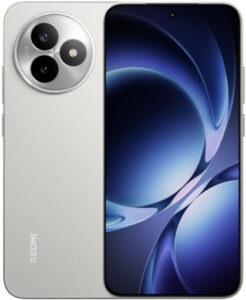Mobile Brands
Apple | Asus | Google Pixels | Honor
iQOO | Motorola |Nothing| OnePlus Oppo | Realme | Samsung | Vivo | Xiaomi


Xiaomi Redmi K80 Ultra
| Specifications | Details |
|---|---|
| Model Name | Redmi K80 Ultra |
| Release date | June 2025 |
| Design and Build Quality | |
| Material used Front | OLED panel with Xiaomi Shield Glass |
| Material used back | Fiberglass back panel |
| Frame Build | Four-curved metal frame |
| Dimensions | 163.08 × 77.93 × 8.18 mm |
| Weight | 219 g |
| Ergonomics | Slim, curved metal frame with fiberglass back—sturdy yet comfortable |
| Water and Dust resistance | IP68 dust-tight & water-resistant |
| Colour Options | 3D Ice Cycle Cold Pump with a large cooling platform |
| Display | |
| Screen Size | 6.83-inch |
| Type | 1.5K AMOLED (OLED), Dolby Vision, HDR10+, DC dimming |
| Resolution | 2772 × 1280 pixels (~447 ppi) |
| Refresh Rate | 144 Hz |
| Pixel Density | ~447 ppi |
| Brightness | Peak up to ~3200 nits; typical ~800 nits |
| Hardware and Performance | |
| Chipset | MediaTek Dimensity 9400+ (3 nm) |
| CPU | Octa-core: 1×3.73 GHz Cortex-X925 + 3×3.3 GHz Cortex-X4 + 4×2.4 GHz Cortex-A720 |
| GPU | Immortalis-G925 MC12 + Discrete Graphics D2 chip |
| RAM/ROM | 12GB or 16GB LPDDR5X RAM; 256GB / 512GB / 1TB UFS 4.1 storage |
| Card Slot | No microSD slot |
| Benchmark Result | AnTuTu ≈ 2.82M (some sources claim up to 3.24M) |
| Gaming Performance | 144 FPS ultra-high frame-rate gaming via D2 chip; advanced cooling (3D Ice Cycle Cold Pump, 6500 mm² cooling area) |
| Multitasking Capabilities | Excellent—LPDDR5X RAM, UFS 4.1 storage |
| Heat Management | Standard Redmi apps may lack Google Services in some regions |
| Main Camera Specification | |
| Number of Cameras | Dual-camera: 50 MP (main) + 8 MP (ultrawide) |
| Photo Quality | Light-Hunter 800 (OV50E-based) 1/1.55″ sensor, OIS |
| Video Quality | Up to 8K video recording |
| Features | OIS, wide-angle 119° ultrawide shooter |
| AI and Editing Capabilities | AI computational improvements via Xiaomi AISP platform |
| Front Camera Specification | |
| Number of Cameras | Single 20 MP front camera |
| Photo Quality | Sharp selfies, HDR |
| Video Quality | Up to 1080p @60fps |
| Features | Portrait, HDR |
| AI and Editing Capabilities | Standard AI enhancements |
| Software and User Experience | |
| Operating System | Android 15 with HyperOS 2 |
| User Interface (UI) | HyperOS 2 (optimized for performance & efficiency) |
| Pre-installed apps or Bloatware’s | Exceptional endurance—over 1.5-2 days of moderate use |
| Features | |
| Sensors | In-display fingerprint, infrared, gyro, compass, proximity, accelerometer |
| Additional UI Features | High touch sampling (480Hz), eye comfort, HDR Vivid enhancements |
| Battery | |
| Battery Capacity | 7410 mAh (Si/C Li-Ion) |
| Real World uses | 5G (multiple bands), 4G LTE, 3 G, 2G |
| Screen-on-time | Likely 8–10 hours (not officially confirmed) |
| Charging speed | 100W wired fast charging (bypass mode); some listings mention 120W bundled charger |
| Wireless | Not supported |
| Sound | |
| Loudspeaker | Stereo speakers, coaxial symmetrical design, Hi-Res Audio, Dolby Atmos |
| 3.5mm jack | No |
| Network | |
| Number of SIMs | Dual Nano SIM (dual standby) |
| Band Networks | 5G (multiple bands), 4G LTE, 3G, 2G |
| Wi-Fi | Wi-Fi 7 |
| Bluethooth | Bluetooth 5.4 with LHDC 5 |
| Positioning | GPS, GLONASS, Galileo, BDS, QZSS, NavIC |
| Radio | No FM radio |
| Infrared Port | Yes |
| NFC | Yes |
| USB | USB-C, OTG supported |
| Pricing | |
| Variant | Price |
| 12GB + 256GB | CNY 2,599 (~$362) |
| 16GB + 1TB | CNY 3,799 (~$529) |
| Pros and Cons | |
| Pros | Cons |
| Huge battery, flagship-level Dimensity 9400+, 144 Hz ultra-bright display, IP68, strong cooling & gaming features, excellent value | No wireless charging, no telephoto camera, heavy (219 g), Google services not guaranteed in all regions |
| Smartphone in the same segment | |
| Smartphones | OnePlus Ace 5 Ultra, Samsung S25 FE, Poco F7 Ultra (global version) |
| Overall Rating | 9.0 / 10 |